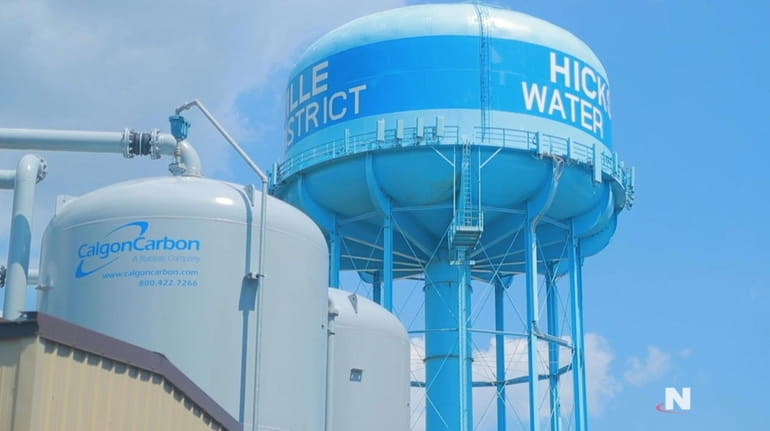Water providers say millions more will be needed to meet state standards

Long Island water providers on Wednesday said they will have to spend hundreds of millions of dollars over the next few years to meet new state drinking water standards for emerging contaminants — all but assuring ratepayers they will share in the burden.
The state Department of Health on Thursday is expected to adopt its first-ever maximum contaminant levels for three chemicals: 1,4-dioxane, a likely carcinogenic industrial solvent also found in trace amounts in household products; perfluorooctane sulfonic acid (PFOS), used in firefighting foams; and perfluorooctanoic acid (PFOA) found in stain- and water-resistant material.
Together, the three are present in about 70% of public water supply wells on Long Island, with 1,4-dioxane the most prevalent. So far, only two wells — in Bethpage and Central Islip — have fully approved and operational systems to remove 1,4-dioxane below the expected standard of 1 part per billion.
Twenty more systems are awaiting final state approval, 35 are in the pilot testing phase and an additional 50 are being designed or constructed, officials said at a news conference on the grounds of the Hicksville Water District, where one of the systems is being tested.
Local water districts said they already have spent $150 million on these treatment systems, which rely on an advanced oxidation process, known as AOP, along with more traditional carbon filtering.
To meet the new state standards — which Gov. Andrew M. Cuomo has called the most protective in the nation — providers estimate they’ll need to spend $350 million within the next year and $350 million more over the five years that follow.
The state last year awarded $120 million in grants to the local water districts to help pay for these systems, and more state and federal grants are expected. Many districts also have filed lawsuits that seek compensation from the large manufacturers that caused 1,4-dioxane to contaminate the groundwater over decades.
Still, Paul Granger, superintendent of the Hicksville Water District, which has a well with Long Island’s highest level of 1,4-dioxane, was blunt.
“Rates will go up,” he said. “I’ve been in this business 30 years and this is one of the biggest challenges I’ve seen.”
Other water providers in the state will grapple with meeting the new standards, but the problem is heightened on Long Island because the aquifer is residents’ sole drinking water source.
In some areas, emerging contaminants must be dealt with alongside high levels of traditional cancer-causing industrial chemicals that have formed large toxic groundwater plumes. Northrop Grumman and the U.S. Navy are negotiating with the state Department of Environmental Conservation to enact a $585 million cleanup on the largest such plume, which is spreading beneath Bethpage and surrounding communities.
The COVID-19 pandemic, meanwhile, has placed additional financial strain on local water districts.
“There are still large budget gaps we need to make up to pay for the rest of the treatment,” said Richard Passariello, Roslyn Water District superintendent and chairman of the Long Island Water Conference, which represents local providers.
Once the new standards are published in the state register, local water providers, depending on how many customers they serve, will have between 60 days and six months to begin testing for the three contaminants. Most on Long Island, however, already conduct these tests.
Passariello noted that water districts have been preparing for the new standards for several years. The Health Department in July 2019 made the recommendations expected to be adopted Thursday by the Public Health and Health Planning Council.
“We cannot stress enough to the public that we have been on top of this issue since it began,” Passariello said.
While some public health advocates have said the new standards don’t go far enough — and have taken too long — others lauded the action finally being taken.
“This is a new beginning for clean drinking water protection," Adrienne Esposito, executive director of the advocacy group Citizens Campaign for the Environment, said in a statement.
Water providers often have found themselves straddling a fine line in arguing that they always have ensured safe drinking water, but that compliance with new regulations will pose real challenges.
But they avoided criticizing the state on Wednesday.
“They have done the science and they made the decision as to what the standard is,” Joe Pokorny, Suffolk County Water Authority deputy chief executive for operations, said of the state. “As a water supplier, my responsibility is to treat the water and make sure that it meets those standards.”

